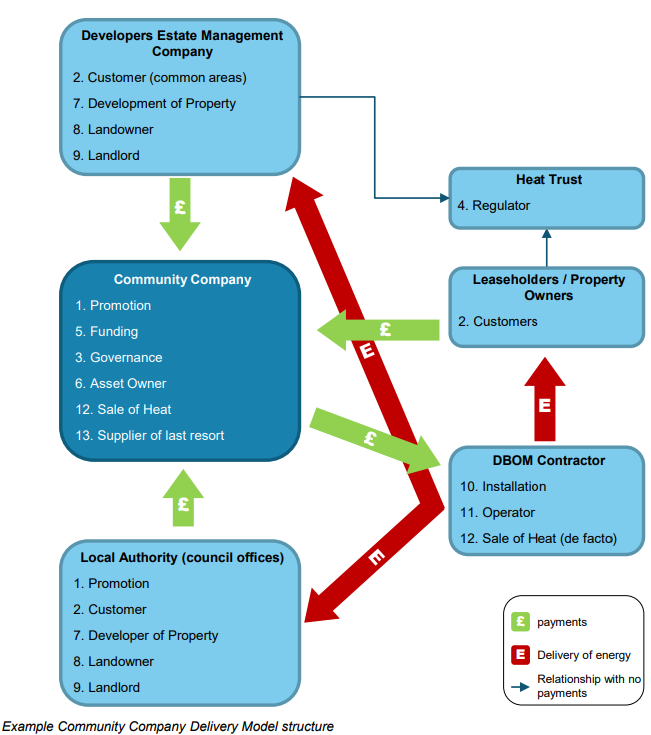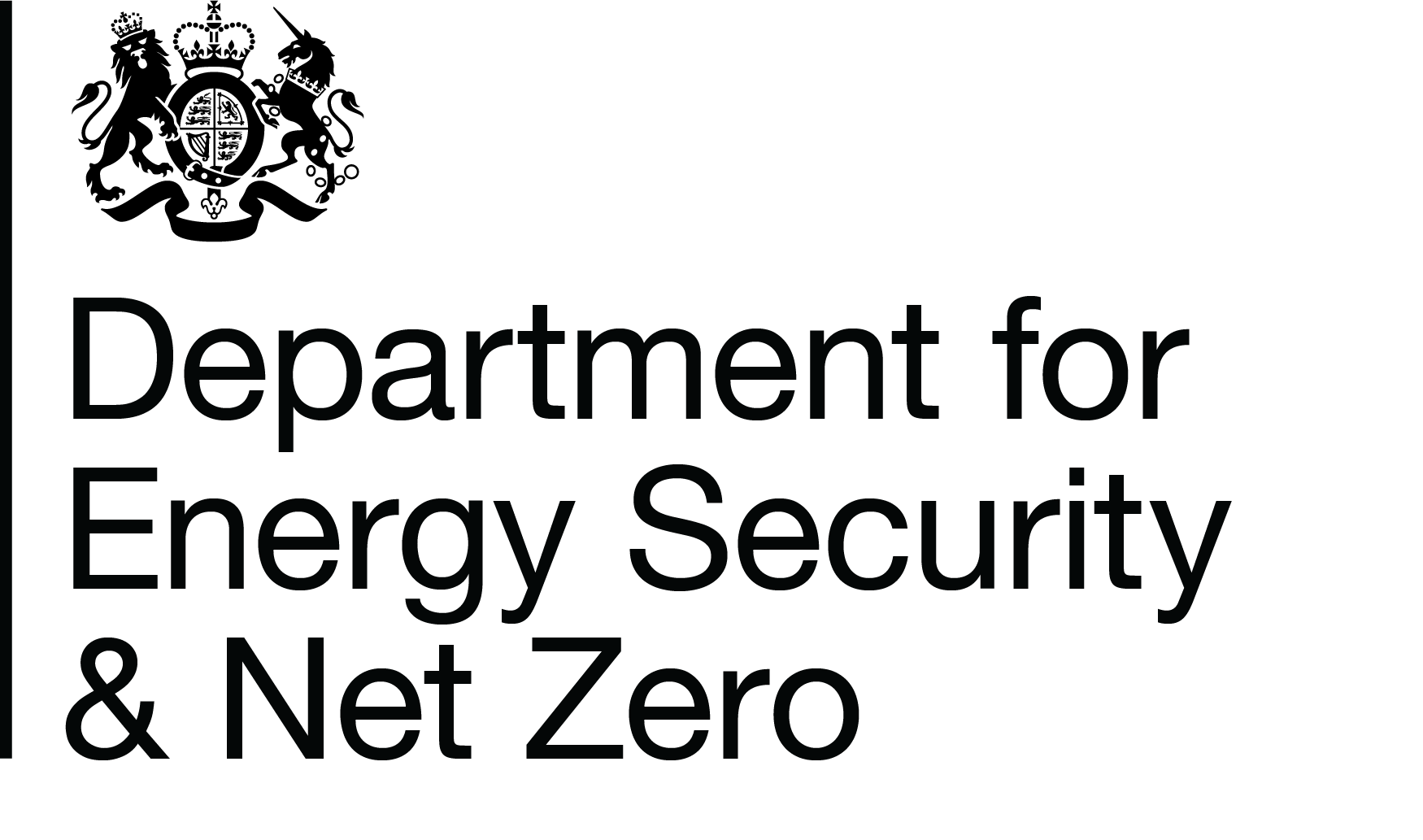In a community led scheme, a Community Body of some sort will be central to the Governance of the scheme, as well as potentially being the generator and undertaking sale of heat.
Key roles for Community CompanyIn a community led scheme, a Community Body of some sort will be central to the Governance of the scheme, as well as potentially being the generator and undertaking sale of heat. In some cases the Community Body may undertake a number of other roles such as funding of the scheme. |
 |
Community Company Procurement route
The procurement routes for the Community Company Delivery Models are varied. The Community Body could procure a private sector company to come in and undertake many of the roles, similar to the private sector led schemes. A concession agreement is possible with the Community Body as the signatory.
However, it is also possible for the Community Body to procure individual roles and undertake metering and billing itself.
Legal considerations
The legal considerations in a community led scheme are much the same as in a private led scheme, other than issues relating to recourse(contractor, funder or customer). The entity set up to deliver a community scheme is likely to be a Community Benefit Society or a Community Interest Company, set up for the purposes of the project. Such entities will have low capitalisation, with their main assets lying in the assets of the scheme itself. Funders of the scheme will be potentially putting their money at risk, whilst contractors (such as EPC) will have little reassurance as to the community entities ability to pay for works completed. From a customer perspective, the concern will be about the quality of delivery and the limited recourse available against a community company. Despite these issues, Community schemes have been successfully delivered as illustrated in the Springbok case study.
Advantages and disadvantages of a Community Company
The key benefit of this route is that the end customers are empowered to gain all the benefits of district heating such as low energy costs and returns on investment.
One of the issues associated with a Community led scheme is who undertakes the role of Supplier of Last Resort and what customer protection is in place. For example, how could a sudden increase in running costs affect customers?
Some of the risks associated with Supplier of Last Resort are overcome by the Community Body having full control of the system (i.e. procuring separate roles rather than a concession).
Tax Summary for Community Company
From both a direct tax and indirect tax perspective, the implications will be similar to those presented in private led.
More details of the specific considerations for this model can be found in private led.
Example Public-Private Shared Leadership structure
There are many potential structures for Community Company schemes. The figure opposite, shows an example of the parties that may undertake the roles in a Community Company Delivery Model structure. It shows the key monetary and energy flows between the parties, but it does not attempt to show the structure of the different relationships as these are often very bespoke.
In this hypothetical scheme, a community energy company is set up to manage the delivery of heat to local residents of a new development site and of other stand-alone residential properties. The residents – i.e. leaseholders and property owners – are the main customers of the company. The new development’s estate management company purchases heat for the common areas of the building.
The local authority generally plays an important role in facilitating these schemes, given that the schemes drivers are often well aligned with their energy strategies. This can take multiple forms, performing promoter roles, providing technical or financial support to commission feasibility studies. In this case the has a council office nearby which can also be connected and provide an anchor load for the network.
There is likely to be a private sector contractor involved in the scheme to undertake the installation and operation. An integrated DBOM contract structure will help ensure a good quality system is installed through the use of operational performance-based contract requirements.
The Supplier of Last Resort role would fall in the first instance to the CoCo. If the operator became insolvent or a contract was terminated, the CoCo would have the rights and resources to procure an alternative operator. The Heat Trust operates as the scheme regulator.
Further information
Further information on community energy networks can be found in the DBEIS Community-led Heat Projects Toolkit

